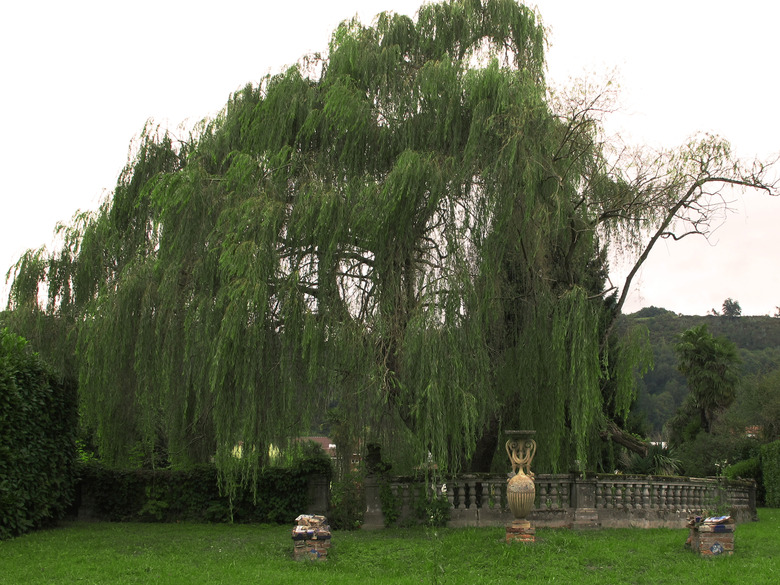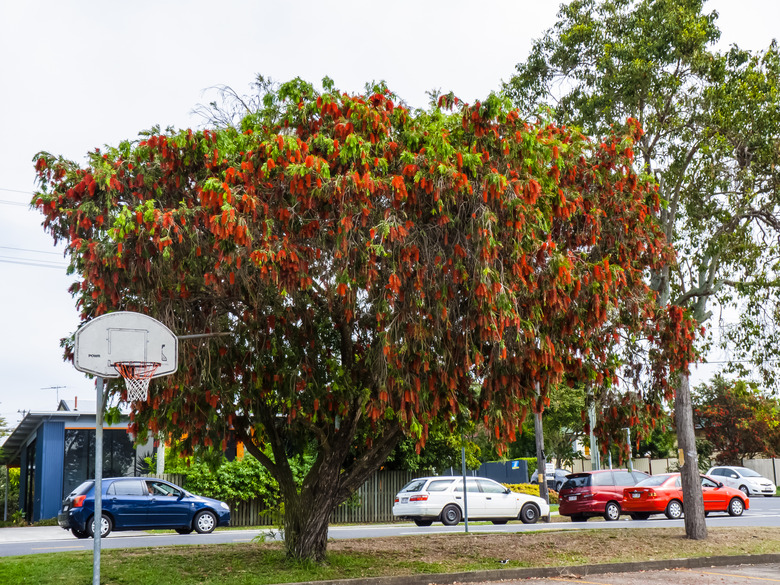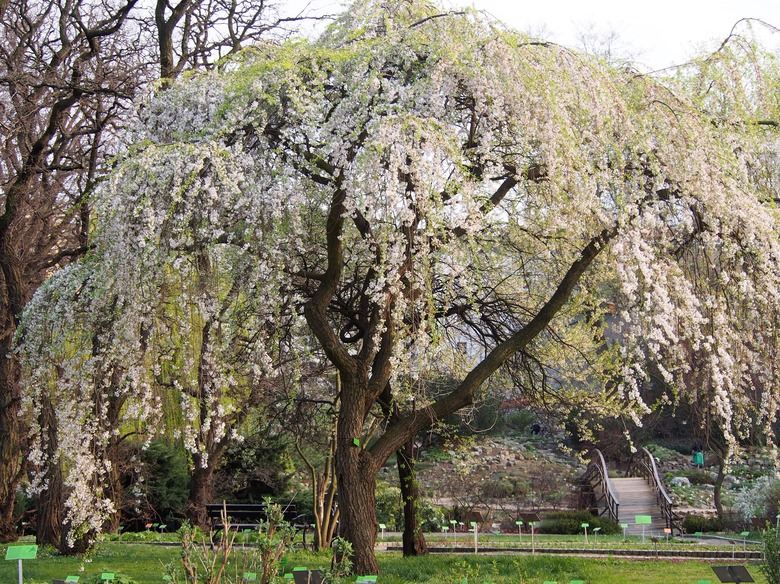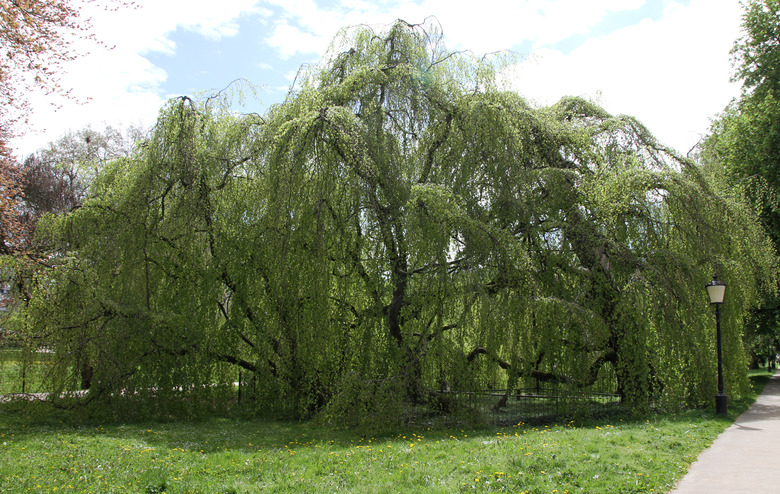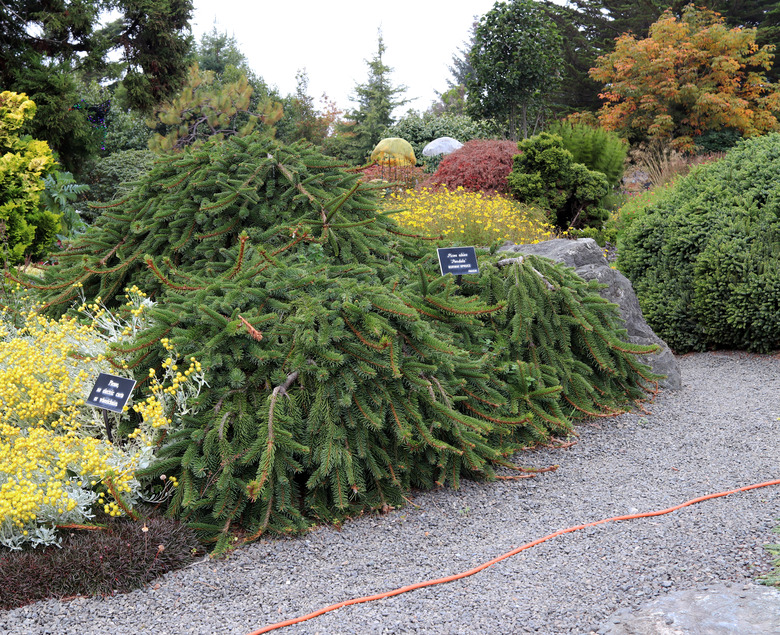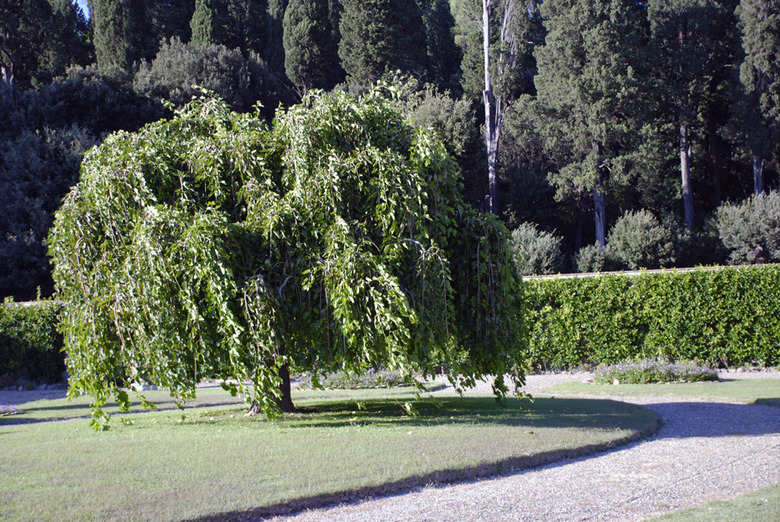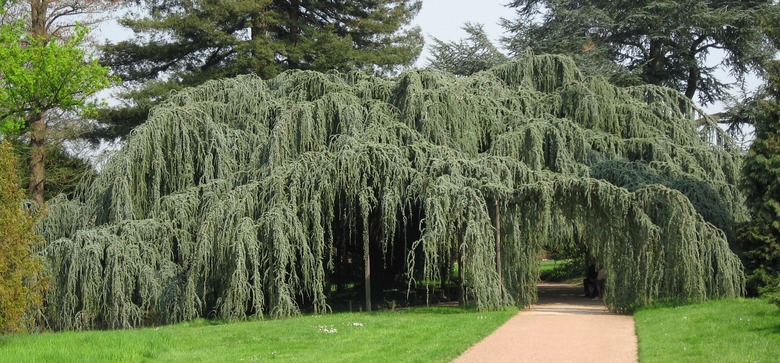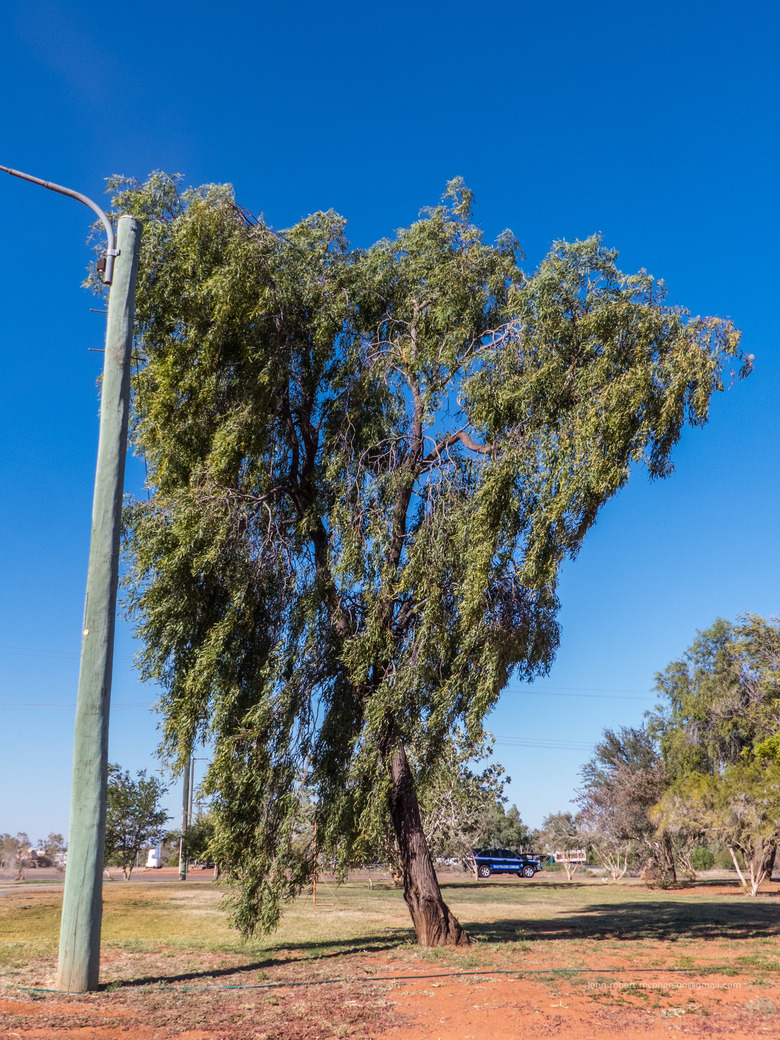Trees Similar To A Weeping Willow
The weeping willow (Salix babylonica, zones 6a to 8b) is distinguished by its drooping branches that fall like a skirt around the trunk. Willow tree leaves are 3 to 6 inches long and less than 1 inch wide. The tree, native to East Asia, grows best in damp, low-lying spots and on the banks of ponds and streams.
Some cherry, beech, cedar and other trees have the weeping, pendulous branches that characterize Salix. Generally, any tree with the word "pendula" in the cultivar is a weeping specimen.
Weeping Trees Similar to Weeping Willows
| Name | Hardiness Zones | Characteristics |
| Weeping Bottlebrush (Melaleuca viminalis) | 9b to 11 | Striking red flowers that are 3 to 5 inches long and resemble bottlebrushes; abundant blooms with numerous clustered stamens on long spikes. |
| Whitewater Weeping Redbud (Cercis canadensis 'Whitewater') | 6a to 9b | Small purplish-red flowers that bloom on bare branches in the spring before the leaves appear; heart-shaped leaves are white with green flecks when they emerge and then turn into leaves that are green with white flecks. |
| Weeping Cherry (Prunus subhirtella) | 5a to 8b | In the spring, trees are covered in light pink double blooms before the leaves appear; the blooms last about a week. |
| Weeping Beach (Fagus sylvatica) | 4a to 7b | Slow-growing tree that can reach 50 feet in height, yet it's typically wider than it is tall; has insignificant flowers and produces small nuts when the tree matures. |
| Norway Spruce (Picea abies) | 2b to 7a | When staked, it grows into a pyramid-shaped tree; when left untrained, the branches trail along the soil as a ground cover; has small, pink flowers and cones that are 3 to 6 inches long. |
| Weeping White Mulberry (Morus alba) | 5 to 8 | Early spring flowers are followed by edible fruits in June; 'Pendula' cultivar is a weeping shrub that rarely grows more than 10 feet tall. |
| Weeping Blue Atlas Cedar (Cedrus atlantica 'Glauca Pendula') | 6a to 8a | Drooping branches are covered in steel-blue needles; cones are 3 to 6 inches long. |
| Weeping Myall (Acacia pendula) | 9 to 11 | Grows about 2 feet a year, eventually reaching a height of 30 feet; yellow flowers appear in winter or spring, and leaves are silver, bluish-green or gray-green. Makes a good hedgerow or screen when planted in multiples. |
Showy Weeping Trees
Let's take a look at some of the more showy weeping trees.
**Weeping Bottlebrush:** A member of the myrtle family, weeping bottlebrush (Melaleuca viminalis) is hardy in zones 9b to 11. This evergreen Australia native has striking red flowers that are 3 to 5 inches long and resemble the brushes used to clean the inside of bottles. Abundant blooms with numerous clustered stamens on long spikes last from March through summer and sometimes into the winter.
**'Whitewater' Weeping Redbud:** Hardy in zones 6a to 9b, the 'Whitewater' weeping redbud (Cercis canadensis 'Whitewater') has small purplish-red flowers that bloom on bare branches in the spring before the leaves appear. The heart-shaped leaves are white with green flecks when they emerge and then turn into leaves that are green with white flecks. This tree, which resembles a weeping willow with pink flowers, is a good candidate for a butterfly garden because of its flowers, but it will also thrive in urban environments with poor soil.
**Weeping Cherry:** Also called the winter-flowering cherry, rosebud cherry or spring cherry, the weeping cherry (Prunus subhirtella) is hardy in zones 5a to 8b. In the spring, trees are covered in light pink double blooms before the leaves appear. The blooms last about a week. Gardeners who purchase young trees for their landscape should buy a cultivar in the 'Pendula' group. Otherwise, the tree won't weep.
Weeping Trees for the Landscape
Now let's look at weeping trees perfect for plenty of landscapes.
**Weeping Beech:** Hardy in zones 4a to 7b, weeping beach (Fagus sylvatica) is a slow-growing tree that can reach 50 feet in height. Typically wider than it is tall, the tree has insignificant flowers and produces small nuts when the tree matures. The beechnuts contain saponin glycosides, a poison that can be neutralized by cooking. Like the weeping cherry, trees in the 'Pendula' cultivar have drooping branches, while other cultivars don't.
**Norway Spruce:** Small branches droop from the main branches of the 'Pendula' cultivar of weeping Norway spruce (Picea abies), hardy in zones 2b to 7a. When staked, the spruce grows into a pyramid-shaped tree. When left untrained, the branches trail along the soil as a ground cover. This evergreen has small, pink flowers and cones that are 3 to 6 inches long.
**Weeping White Mulberry:** Hardy in zones 5 to 8, the weeping white mulberry (Morus alba) is native to China but was imported into the U.S. in an attempt to establish a silk industry. Early spring flowers are followed by edible fruits in June. The cultivar 'Pendula' is a weeping shrub that rarely grows more than 10 feet tall. Keep in mind that birds love mulberries, and the mess they create eating the fruit of these dwarf weeping trees will stain sidewalks and cars.
Weeping Espalier Trees
Espaliers are plants that are trained to grow flat against a wall, lattice or other support.
**Weeping Blue Atlas Cedar:** Frequently trained to be an espalier, the weeping blue atlas cedar (Cedrus atlantica 'Glauca Pendula') is hardy in zones 6a to 8a. The tree's drooping branches are covered in steel-blue needles. The cones are 3 to 6 inches long.
**Weeping Myall:** Like weeping cedar, weeping myall (Acacia pendula) is a good espalier. Hardy in zones 9, 10 and 11, the tree also makes a good hedgerow or screen when planted in multiples. Also known as weeping acacia, weeping myall grows about 2 feet a year, eventually reaching a height of 30 feet. Yellow flowers appear in winter or spring, and leaves are silver, bluish-green or gray-green. The fruits of the weeping myall are pods 1 to 3 inches long.
